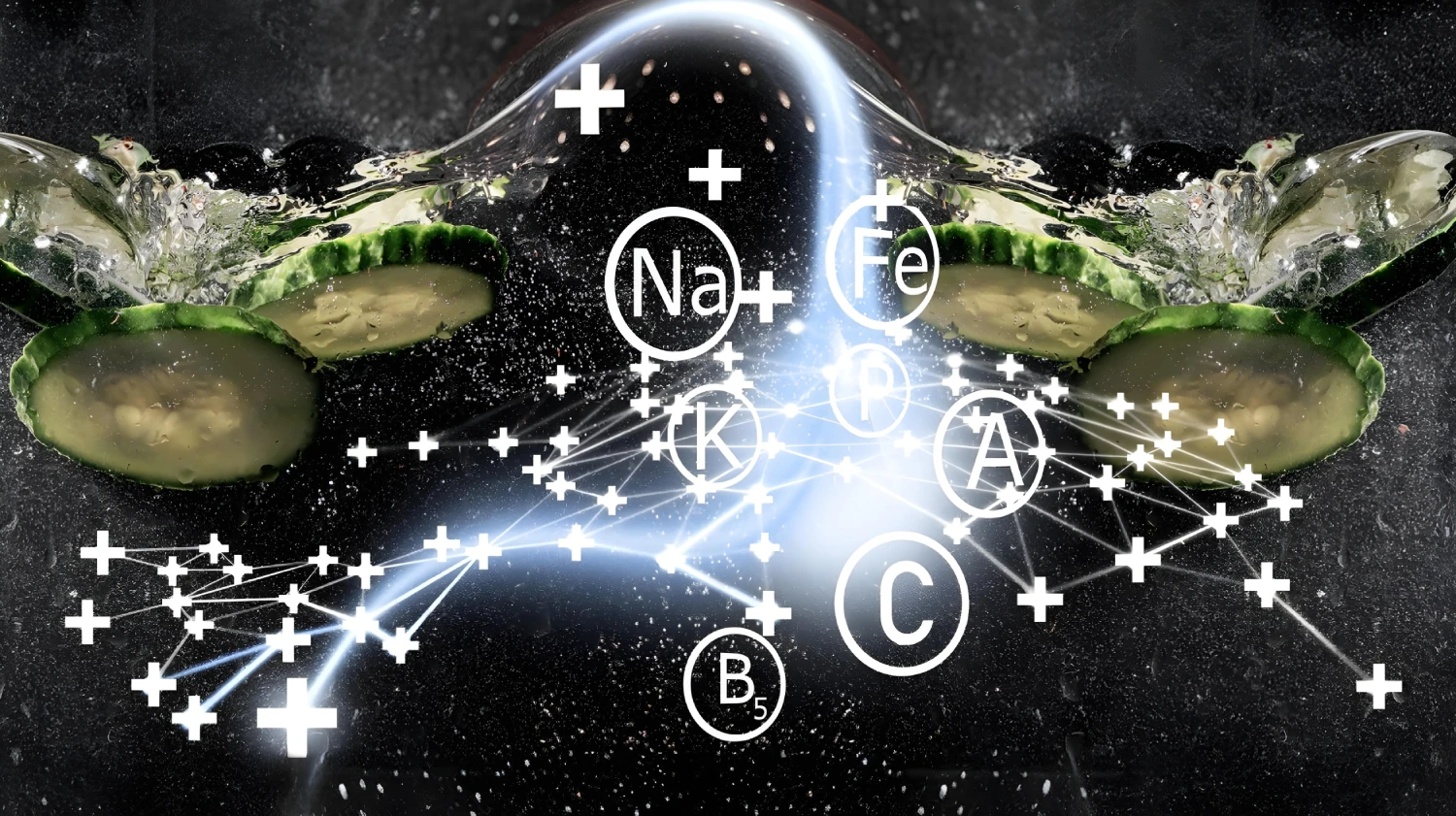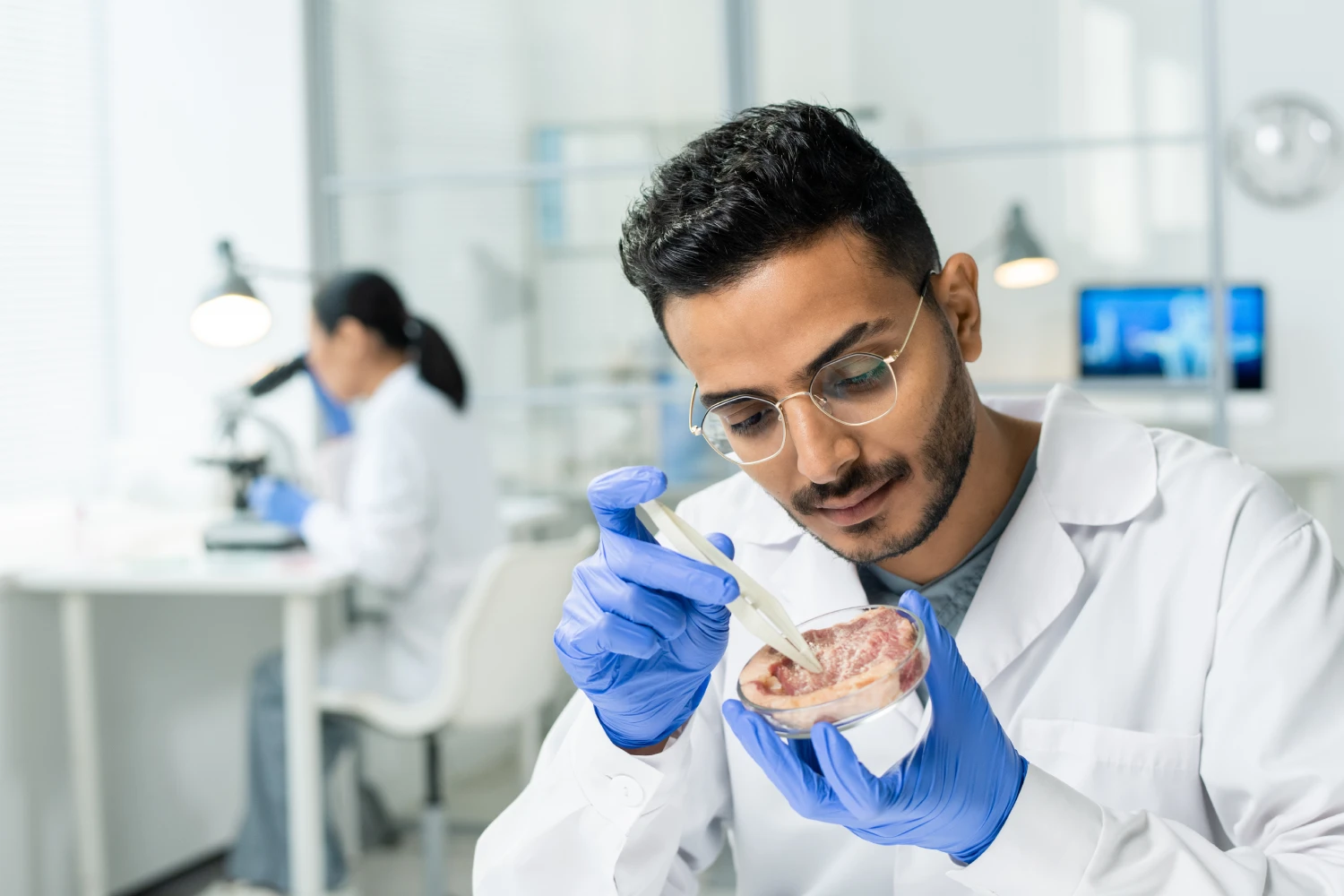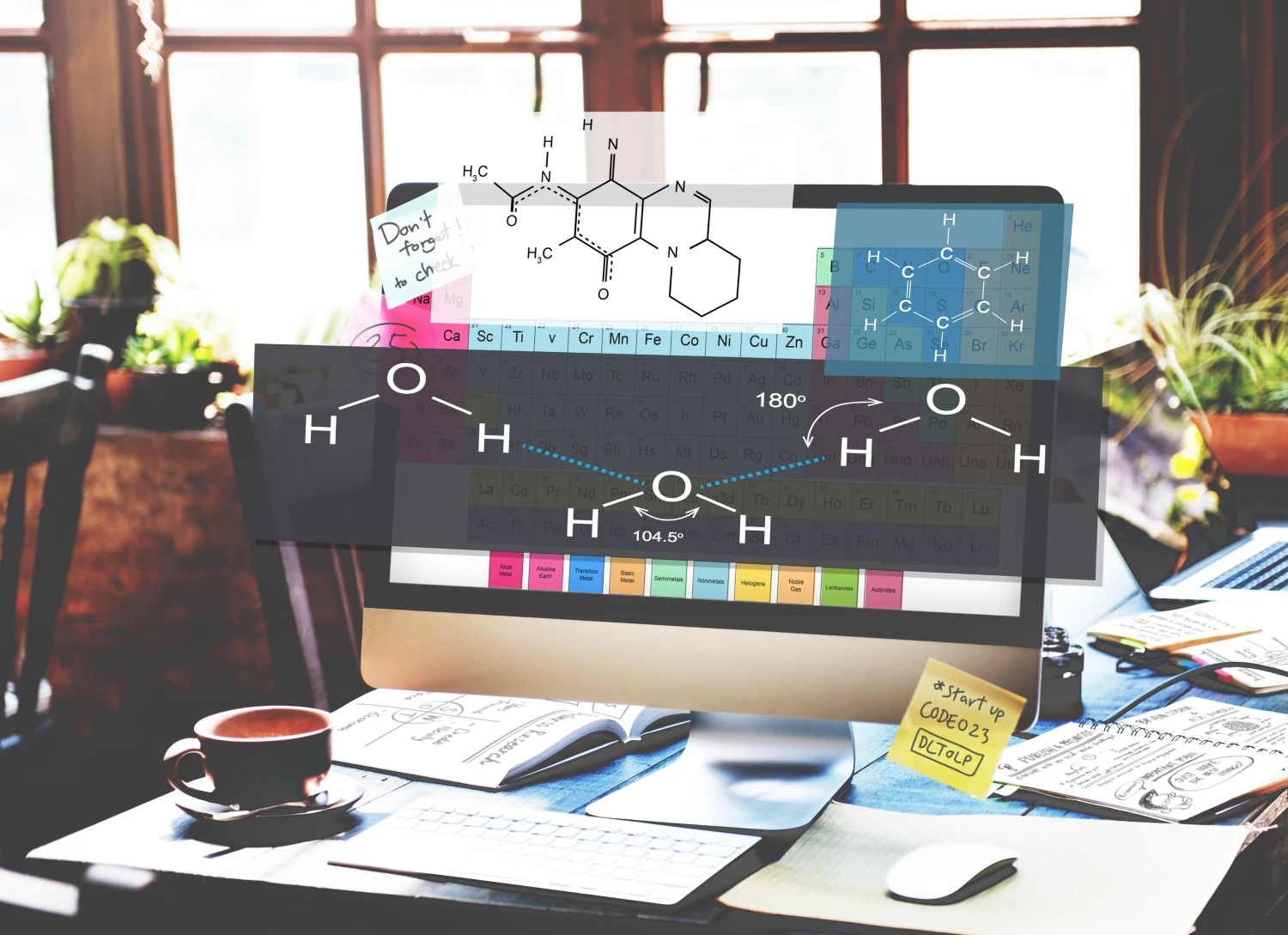Setting Up a Food Laboratory: Everything You Need to Know
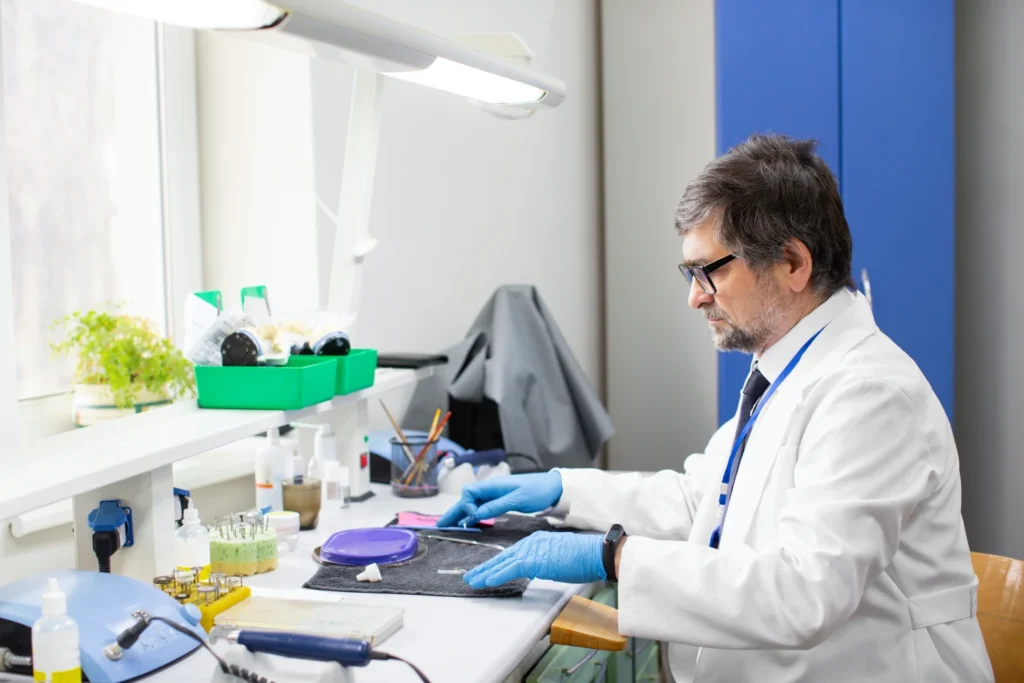
1. Introduction: The Foundation of Food Safety and Innovation
The food industry’s rapid evolution demands sophisticated testing capabilities to ensure product safety, quality, and compliance. Establishing a food laboratory has become essential for food manufacturers, processors, and quality assurance professionals seeking to maintain competitive advantage while meeting stringent regulatory requirements.
Whether you’re a startup developing innovative products or an established manufacturer expanding capabilities, understanding the intricacies of a food laboratory setup is crucial for long-term success.
Modern consumers increasingly demand transparency in food production, driving manufacturers to implement comprehensive testing protocols. Regulatory authorities worldwide have strengthened food safety requirements, making laboratory testing mandatory for market access.
From microbiological contamination detection to nutritional labelling verification, food laboratory capabilities directly impact business sustainability and consumer trust.
This comprehensive overview provides essential insights for establishing a world-class food testing facility that meets current demands while positioning for future growth opportunities.
2. Understanding Food Laboratory Types: From Small Startups to Large Enterprises
Modern food businesses require different laboratory configurations based on their operational scope and testing requirements. The scale and complexity of laboratory operations vary significantly between small startups and large enterprises, making it crucial to understand these differences for optimal setup decisions.
Small Startup Food Laboratories:
Small startups typically require cost-effective, space-efficient solutions with essential testing capabilities:
- Basic Testing Scope: Limited to fundamental quality control parameters such as pH, moisture content, basic microbiological testing, and nutritional analysis. Startups often focus on 3-5 core tests that directly impact product safety and compliance.
- Equipment Selection: Multi-purpose, compact instruments that can perform various analyses. Portable or benchtop models that require minimal installation and maintenance while providing reliable results for regulatory compliance.
- Staffing Requirements: 1-3 technicians with cross-functional capabilities who can perform multiple types of analyses. Often includes part-time or consultant arrangements to optimize resources while maintaining expertise.
Large Enterprise Food Laboratories:
Large enterprises require comprehensive, high-throughput facilities with advanced analytical capabilities:
- Comprehensive Testing Scope: Full spectrum of analyses including advanced contaminant screening, detailed nutritional profiling, shelf-life studies, sensory evaluation, and specialized research applications across multiple product lines.
- Advanced Equipments: State-of-the-art instrumentation including multiple HPLC systems, GC-MS/MS, LC-MS/MS, automated sample handling systems, and specialized research equipment. Redundant systems ensure continuous operation and minimal downtime.
- Specialized Personnel: Dedicated teams including food scientists, microbiologists, analytical chemists, and quality assurance specialists with advanced degrees and specialized certifications.
Which laboratory type suits your business needs?
- Research and Development (R&D) laboratories focus on product innovation, formulation development, and prototype testing. These facilities require specialized equipment for texture analysis, flavor profiling, and nutritional assessment because product development demands precise characterization of sensory and functional properties that determine market acceptance.
- Quality control laboratories serve as the foundation of food safety operations, conducting routine testing for microbial contamination, chemical composition, and physical parameters. These facilities must maintain strict protocols for sample handling and result documentation to ensure regulatory compliance, as any deviation can result in product recalls and regulatory penalties.
- Pilot-scale facilities bridge the gap between food laboratory research and commercial production. They enable testing of scaled-up formulations, optimize processing parameters, and validate production methods before full commercial implementation. This step is essential because laboratory-scale results often do not translate directly to commercial production conditions.
3. Regulatory Framework: Navigating FSSAI and International Standards
What regulatory requirements must your Food Laboratory meet?
The Food Safety and Standards Authority of India (FSSAI) mandates specific requirements for food testing laboratories operating within the country. FSSAI compliance includes:
- Facility registration.
- Personnel qualification standards.
- Adherence to prescribed testing methodologies.
NABL (National Accreditation Board for Testing and Calibration Laboratories) provides accreditation services to Conformity Assessment Bodies (Laboratories) in India, following ISO/IEC 17025 standards. The results from accredited laboratories are used extensively by regulators for the public benefit in the provision of services that promote an unpolluted environment, safe food, clean water, energy, health and social care services.
ISO 17025 accreditation represents the gold standard for testing and calibration laboratories worldwide. This international standard ensures technical competence, management system effectiveness, and result reliability. Achieving ISO 17025 accreditation demonstrates commitment to quality and enhances market credibility.
Integrated Management System (IMS):
Modern food laboratories increasingly adopt Integrated Management Systems combining multiple ISO standards for comprehensive operational excellence:
- ISO 9001 (Quality Management System): Establishes customer-focused quality management principles, continuous improvement processes, and systematic approach to meeting customer requirements and regulatory compliance.
- ISO 45001 (Occupational Health and Safety Management): Ensures safe working environments through hazard identification, risk assessment, and systematic safety management protocols essential for laboratory operations involving chemicals and biological materials.
- ISO 14001 (Environmental Management System): Addresses environmental responsibilities including waste management, chemical disposal, energy efficiency, and environmental impact reduction critical for sustainable laboratory operations.
Good Laboratory Practice (GLP):
GLP principles ensure data integrity, traceability, and regulatory compliance through:
- Systematic documentation and record-keeping.
- Personnel training and qualification protocols.
- Equipment calibration and maintenance procedures.
- Quality assurance oversight and audit compliance.
Traceability Software and Chemical Hazards Management:
Modern laboratories require sophisticated software systems for:
Sample Tracking and Traceability:
- Automated sample registration and labelling.
- Chain of custody documentation.
- Real-time sample status monitoring.
- Integration with Laboratory Information Management Systems (LIMS).
Chemical Hazards Management:
- Comprehensive chemical inventory management.
- Safety Data Sheet (SDS) database integration.
- Automated expiry date tracking.
- Hazardous waste disposal documentation.
- Emergency response procedure management.
Key accreditation benefits include:
- National Accreditation Board for Testing and Calibration Laboratories (NABL) accreditation provides national recognition for laboratory competence.
- NABL-accredited laboratories can issue legally valid test certificates accepted by regulatory authorities and international trade partners.
- International certifications such as AOAC International and AACC International provide specialized recognition for specific testing methodologies.
- These certifications enhance laboratory credibility and enable participation in global food supply chains.
4. Food Laboratory Infrastructure: Specialized Testing Capabilities
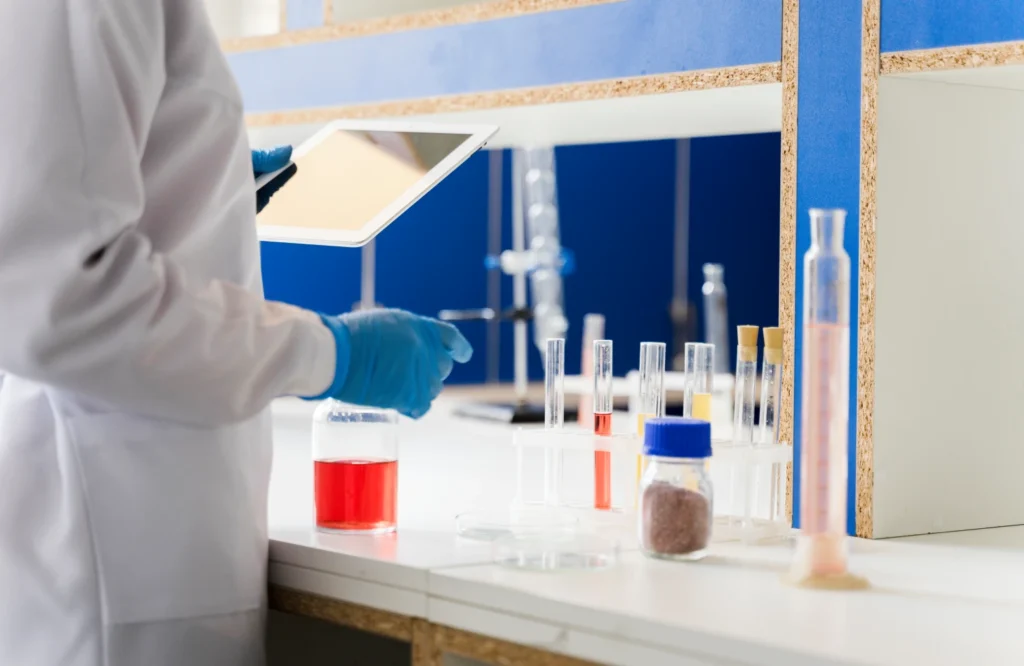
What equipment and analytical services form the foundation of a modern food laboratory?
Modern food laboratory operations require sophisticated analytical infrastructure to deliver comprehensive testing services that address food safety, quality, and regulatory compliance requirements.
Core Analytical Equipment and Applications:
High-Performance Liquid Chromatography (HPLC) Systems: Enable precise analysis of vitamins, additives, amino acids, organic acids, sugars, and various contaminants. These systems are essential because they can separate and quantify complex mixtures including heat-sensitive compounds that cannot be analyzed by gas chromatography. Applications include nutritional analysis for macronutrient and micronutrient profiling, amino acid analysis, and vitamin quantification.
Gas Chromatography-Mass Spectrometry (GC-MS/MS): Gas chromatography combined with tandem mass spectrometry provides higher selectivity and sensitivity, particularly suited for analyses requiring the highest sensitivity such as pesticide quantitation. Essential for volatile compounds, pesticides, flavor components, residual solvents, and fatty acid profiling using GC-FID methods.
Liquid Chromatography-Mass Spectrometry (LC-MS/MS): Highly sensitive analysis technique that detects target analytes in trace quantities, with popular applications including targeted analysis and food contaminant detection. Critical for non-volatile compounds, mycotoxins, veterinary drug residues, and polar pesticides. Enables multi-residue methods that simultaneously analyze hundreds of pesticide compounds using QuEChERS extraction.
Atomic Absorption Spectrophotometer (AAS) and ICP-MS: Measures trace metals and mineral content including heavy metals (lead, cadmium, mercury, arsenic), essential minerals (iron, zinc, calcium), and nutritional elements with precision required for regulatory compliance. ICP-MS provides enhanced sensitivity for heavy metal detection at trace levels required by regulatory standards.
Fourier Transform Infrared Spectroscopy (FTIR): Identifies functional groups, authenticates ingredients, detects adulteration, and analyzes food composition through molecular fingerprinting techniques.
UV-Visible Spectrophotometers: Handle routine analysis of proteins, antioxidants, colorants, and enzymatic activity measurements efficiently and cost-effectively.
Ion Chromatography Systems: Analyze ionic compounds including nitrates, nitrites, organic acids, and inorganic anions critical for food safety and quality assessment.
Microbiological Testing Infrastructure and Services:
Modern microbiological laboratories require sophisticated equipment beyond basic techniques to meet current food safety demands:
Essential Basic Equipment:
- Laminar flow hoods for sterile sample handling.
- Incubators with precise temperature control (±0.5°C accuracy).
- Autoclaves for sterilization with validation protocols.
- Automated colony counters and identification systems.
Testing Capabilities:
- Pathogen Detection: Advanced methods including real-time PCR for rapid identification of Salmonella, E. coli O157:H7, Listeria monocytogenes, and Campylobacter.
- Traditional Cultivation: Using selective and differential media including MacConkey agar, XLD agar, and specialized chromogenic media.
- Spoilage Organism Enumeration: Through traditional and automated methods.
- Shelf-life Validation: Using challenge studies and predictive modeling.
Basic Microbiological Techniques:
- Agar Plate Techniques: Traditional cultivation methods using selective and differential media for pathogen isolation, enumeration, and identification including MacConkey agar, XLD agar, and specialized chromogenic media.
- Membrane Filtration Systems: Enable detection of low-level microbial contamination in liquids, particularly useful for water quality testing and sterile product analysis with enhanced sensitivity compared to direct plating methods.
- Enzyme-Linked Immunosorbent Assay (ELISA): Immunological detection methods for allergens, mycotoxins, and specific pathogens providing quantitative results with high specificity and commercial kit availability.
Advanced Microbiological Techniques:
- Polymerase Chain Reaction (PCR) Systems: Real-time PCR provides rapid, specific detection of pathogens including Salmonella, E. coli O157:H7, Listeria monocytogenes, and Campylobacter.
- Automated Microbial Identification Systems: Advanced systems using biochemical fingerprinting, MALDI-TOF mass spectrometry, or genetic sequencing for rapid species identification and antimicrobial susceptibility testing.
Physical Testing and Sample Preparation Equipment:
Precision Instrumentation:
- Analytical Balances: High-precision weighing (0.1mg accuracy) for sample and standard preparation.
- pH Meters: Digital systems with automatic temperature compensation for various food matrices.
- Conductivity Meters: For ionic content and water quality assessment.
- Colorimeters and Spectroradiometers: Objective color measurement using standardized scales (Lab*, Hunter).
- Texture Analyzers: Measure firmness, cohesiveness, adhesiveness, and chewability.
- Viscometers: Assess fluid properties and rheological characteristics.
- Moisture Analyzers: Determine water content using various methods across food matrices.
Sample Preparation Systems:
- Homogenizers for consistent sample preparation.
- Sonicators for extraction and cell disruption.
- Extraction systems (Soxhlet, accelerated solvent extraction).
- Centrifuges for sample clarification.
- Filtration systems for sample cleanup.
Specialized Testing Services:
Contaminant Screening:
- Pesticide Residue Analysis: Multi-residue methods using GC-MS/MS and LC-MS/MS.
- Mycotoxin Analysis: HPLC-FLD or LC-MS/MS methods for aflatoxins, ochratoxin A, fumonisins using immunoaffinity column cleanup.
- Heavy Metal Detection: Precise quantification at regulatory-required trace levels.
Nutritional Analysis:
- Comprehensive macronutrient and micronutrient profiling.
- Amino acid analysis through HPLC.
- Fatty acid profiling using GC-FID.
- Vitamin quantification through HPLC-UV/MS.
- Mineral analysis using ICP-MS or AAS.
Sensory Evaluation: Complements analytical testing by assessing consumer acceptance parameters through trained sensory panels evaluating appearance, aroma, taste, and texture using standardized protocols including triangle tests, descriptive analysis, and consumer preference studies.
Maintenance and Calibration Protocols:
How do you ensure consistent equipment performance?
Preventive maintenance schedules ensure consistent performance and extend instrument lifespan through:
- Daily operational checks and cleaning protocols.
- Weekly performance verification procedures.
- Monthly calibration verification using certified reference materials.
- Annual comprehensive maintenance and calibration services.
Regular calibration using certified reference materials maintains analytical accuracy and regulatory compliance. Equipment validation protocols verify performance specifications and detect potential issues before they impact results.
Service contracts with qualified technicians provide expert support and reduce downtime risks, particularly important for complex analytical instruments requiring specialized expertise.
5. Facility Design and Layout: Optimizing Space for Maximum Efficiency
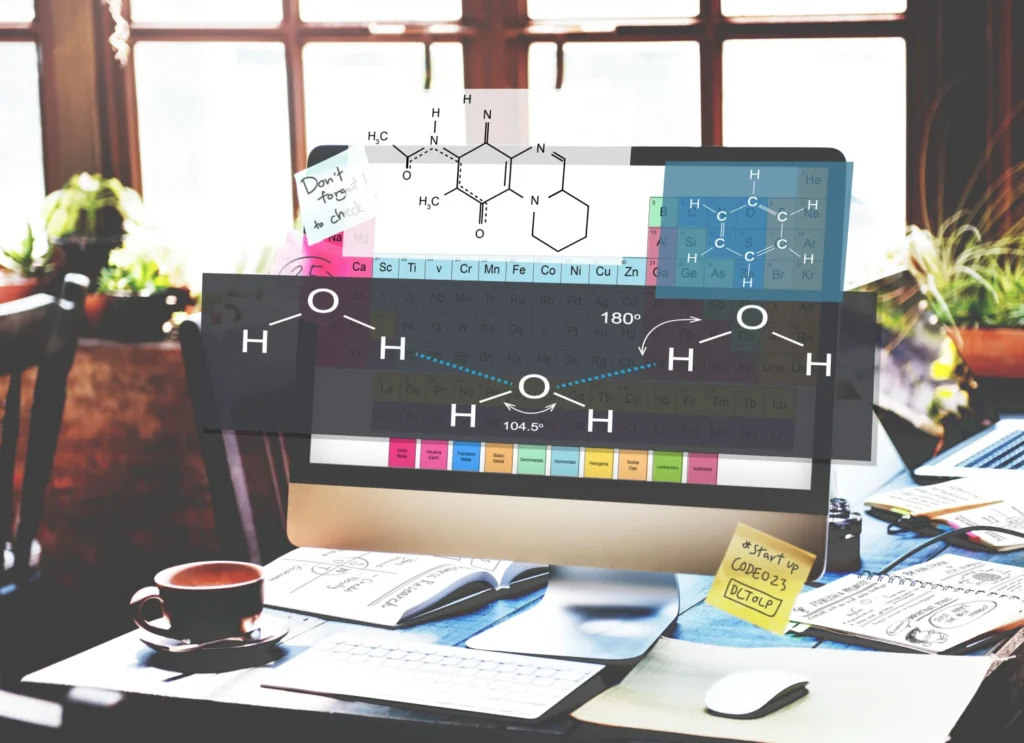
Food Laboratory design must prioritize workflow efficiency, contamination prevention, and safety compliance. Segregated zones for different testing types prevent cross-contamination and ensure result integrity.
Critical Design Considerations:
- Microbiological Testing Areas: Require positive air pressure, HEPA filtration, and restricted access protocols to prevent contamination and ensure sterile conditions.
- Chemical Analysis Sections: Need appropriate ventilation systems, fume hoods, and chemical storage facilities with emergency safety equipment.
- Volatile Organic Compound Analysis: Requires specialized ventilation to prevent atmospheric contamination and ensure worker safety.
Sample Storage Requirements:
What storage conditions does your laboratory need?
- Refrigerated storage (2-8°C) for perishable samples.
- Freezer storage (-20°C to -80°C) for long-term preservation.
- Ambient storage for stable samples with controlled temperature and humidity.
- Archive storage for reference samples and documentation.
Essential Facility Components:
Safety and Compliance Features:
- Emergency exits with clear marking and accessibility.
- Safety showers and eye wash stations strategically located.
- Backup power systems for critical equipment and safety systems.
- Fire suppression systems appropriate for laboratory hazards.
- Spill containment and cleanup stations.
- Chemical fume hoods with adequate face velocity.
- Personal protective equipment storage areas.
Operational Areas:
- Waste management areas with segregated storage for different waste types.
- Cross-contamination prevention through physical barriers and workflow design.
- Handwashing stations at laboratory entrances and key locations.
- Cleaning and disinfection stations with appropriate supplies.
- Equipment maintenance areas with adequate space and utilities.
- Record storage areas with climate control and security features.
- Sample preparation areas with appropriate ventilation and equipment.
- Change rooms for personnel protective equipment management.
Quality and Audit Readiness:
- Ergonomic workstations designed for extended use and operator comfort.
- Adequate lighting (minimum 500 lux) for precise analytical work.
- Temperature and humidity monitoring systems.
- Audit-ready documentation storage and meeting areas.
- Client reception and consultation areas separate from testing zones.
Administrative areas including data analysis workstations, report generation facilities, and client meeting rooms should be separate from testing areas to maintain professional appearance and prevent contamination risks.
6. Quality Control Systems: Implementing Robust Testing Protocols

Why are robust quality systems essential?
Standard Operating Procedures (SOPs) form the foundation of food laboratory quality systems because they ensure consistent, reproducible results regardless of which technician performs the analysis. SOPs must detail every aspect of testing procedures, from sample receipt through result reporting, as incomplete procedures lead to variability and potential regulatory non-compliance.
Key Quality Control Elements:
- Method Validation: Establishes reliability and accuracy through systematic evaluation of precision, accuracy, linearity, specificity, detection limits, and measurement uncertainty according to international guidelines.
- HACCP Integration: Principles integrate with laboratory operations by identifying critical control points where testing can prevent food safety hazards and establishing corrective actions for out-of-specification results.
Internal Quality Control Measures:
- Regular analysis of certified reference materials and quality control samples.
- Participation in proficiency testing programs and inter-laboratory comparisons.
- Implementation of control charts for trending analytical performance.
- Duplicate analysis protocols for critical samples.
- Blank analysis procedures to detect contamination.
Advanced Quality Management Components:
Risk Assessment Protocols:
- Systematic identification of analytical risks and their potential impact.
- Risk mitigation strategies and contingency planning.
- Regular risk assessment reviews and updates.
- Documentation of risk management decisions.
Sample Handling Procedures:
- Chain of custody documentation and verification.
- Sample receipt, storage, and disposal protocols.
- Sample integrity verification and acceptance criteria.
- Traceability systems linking samples to final reports.
Chemical Handling and Disposal:
- Comprehensive chemical inventory management systems.
- Safety data sheet maintenance and accessibility.
- Proper storage segregation and compatibility matrices.
- Hazardous waste disposal documentation and tracking.
- Emergency response procedures for chemical incidents.
Documentation and Audit Systems:
- Regular internal audits and management reviews.
- Comprehensive documentation control procedures.
- Incident and accident reporting systems with root cause analysis.
- Corrective and preventive action (CAPA) management.
- Training records and competency assessment documentation.
Technology Integration and Sample Management:
How can technology improve food laboratory efficiency?
Laboratory Information Management Systems (LIMS) streamline operations through:
- Automated data capture and calculation verification.
- Workflow management and sample tracking.
- Regulatory reporting and compliance documentation.
- Integration with analytical instruments and automated data transfer.
Digital documentation eliminates manual errors and provides comprehensive audit trails required for regulatory compliance. IoT sensors enable real-time monitoring of storage conditions, equipment performance, and environmental parameters.
Sample management protocols ensure integrity from collection through analysis because sample degradation or contamination can invalidate even the most sophisticated analytical methods. Chain of custody documentation tracks sample handling, storage conditions, and analysis timelines, providing the traceability required for legal and regulatory purposes.
Staffing and Training Requirements:
What expertise does your laboratory team need?
Qualified laboratory personnel form the foundation of successful operations because even the most sophisticated equipment cannot compensate for inadequately trained staff.
Essential Requirements:
- Food scientists and laboratory technicians require specialized training in analytical techniques, safety protocols, and regulatory requirements.
- Ongoing training programs ensure staff competency and knowledge of emerging technologies.
- Clear job descriptions, performance metrics, and career development pathways improve staff retention by creating professional growth opportunities.
7. Common Pitfalls and Solutions: Learning from Industry Experience
What are the most common laboratory setup mistakes?
Understanding these frequent challenges can save significant time and regulatory complications.
Financial Pitfalls:
Resource allocation frequently occurs due to underestimating infrastructure requirements, regulatory compliance needs, and ongoing operational expenses. Hidden requirements often emerge during implementation including utility upgrades, specialized ventilation systems, and regulatory approval processes. Industry experts recommend thorough planning to cover unforeseen requirements.
Equipment Selection Errors:
- Purchasing inappropriate instruments without adequate needs assessment.
- Inadequate capacity planning for future growth requirements.
- Neglecting service and maintenance considerations.
- Overlooking staff training requirements for complex instruments.
These errors are problematic because analytical instruments represent long-term investments that are difficult to modify or replace. Thorough needs assessment and expert consultation prevent errors by ensuring equipment specifications match both current requirements and anticipated growth.
Regulatory and Operational Challenges:
- Inadequate understanding of local and international requirements.
- Insufficient documentation and record-keeping systems.
- Improper personnel training and competency assessment.
- Lack of ongoing compliance monitoring and updates.
Non-compliance can result in facility closure, legal penalties, and loss of market access, making prevention essential for business continuity. Early engagement with regulatory consultants and accreditation bodies ensures smooth approval processes.
Staffing Solutions:
The specialized nature of food laboratory work requires specific technical skills that are in limited supply. Key retention strategies include:
- Competitive compensation packages aligned with market rates.
- Comprehensive training programs and continuing education opportunities.
- Career development pathways and professional growth opportunities.
- Creating attractive working conditions and positive organizational culture.
These strategies reduce recruitment needs and maintain operational continuity while building institutional knowledge and expertise.
Conclusion: Your Roadmap to Laboratory Success

Establishing a successful Food Laboratory requires careful planning, substantial commitment, and ongoing dedication to quality excellence. The combination of appropriate equipment, qualified personnel, robust quality systems, and regulatory compliance creates a foundation for long-term success.
Success metrics include achieving target accreditations, maintaining consistent analytical performance, meeting client satisfaction objectives, and achieving operational sustainability. Regular performance monitoring and continuous improvement initiatives ensure continued excellence.
Future-Proofing and Scalability:
The food industry’s growing emphasis on safety, quality, and transparency creates significant opportunities for well-equipped laboratories. Emerging technologies like artificial intelligence, blockchain traceability, and rapid testing methods will reshape laboratory operations. Investment in scalable infrastructure, modular equipment configurations, and adaptable workflows positions laboratories for future growth and technological advancement.
Strategic planning should consider market trends, regulatory changes, and technological developments. Flexible facility design accommodates equipment upgrades and capacity expansion. Partnerships with food tech consultants ensure access to cutting-edge analytical capabilities.
Ready to establish your Food Laboratory or upgrade existing capabilities?
Contact Food Buddies today for expert consultation on laboratory design, equipment selection, and regulatory compliance strategies tailored to your specific requirements.
Frequently Asked Questions (FAQs)
1. What are the basic requirements for setting up a food laboratory?
A food lab needs proper space with segregated testing areas, certified analytical equipment (HPLC, GC-MS, microbiological equipment), trained personnel with relevant qualifications, and adherence to FSSAI regulations and international food safety standards.
2. How do I ensure my food lab meets regulatory standards?
Obtain NABL accreditation following ISO/IEC 17025 standards, comply with FSSAI regulations, implement ISO 9001 (Quality), ISO 45001 (Safety), and ISO 14001 (Environmental) management systems, maintain comprehensive documentation, establish robust quality control procedures, and pass regular internal and external audits.
3. What kind of equipment is essential in a food testing lab?
Essential equipment includes HPLC and LC-MS/MS systems for nutritional and contaminant analysis, GC-MS/MS for volatile compounds and pesticides, analytical balances for precise measurements, pH meters and conductivity meters for basic parameters, spectrophotometers for color and protein analysis, microbiological equipment (incubators, autoclaves, laminar flow hoods), texture analyzers for physical properties, moisture analyzers for water content determination, atomic absorption spectrophotometer for heavy metals, and PCR systems for rapid pathogen detection.
4. What are the common types of tests conducted in a food testing laboratory?
Food testing labs typically perform microbiological testing (to detect pathogens like Salmonella, E. coli, or Listeria), chemical analysis (such as nutritional content, pesticide residues, heavy metals), physical testing (like texture and moisture content), and allergen detection. Sensory evaluation and shelf-life studies are also key components.
5. How should a food testing lab maintain sample integrity throughout the testing process?
Maintaining sample integrity involves proper labeling, storage under controlled conditions, avoiding cross-contamination, adhering to specified holding times, and following standardized handling protocols. Chain-of-custody documentation and traceability are essential for defensibility and accuracy of results.

